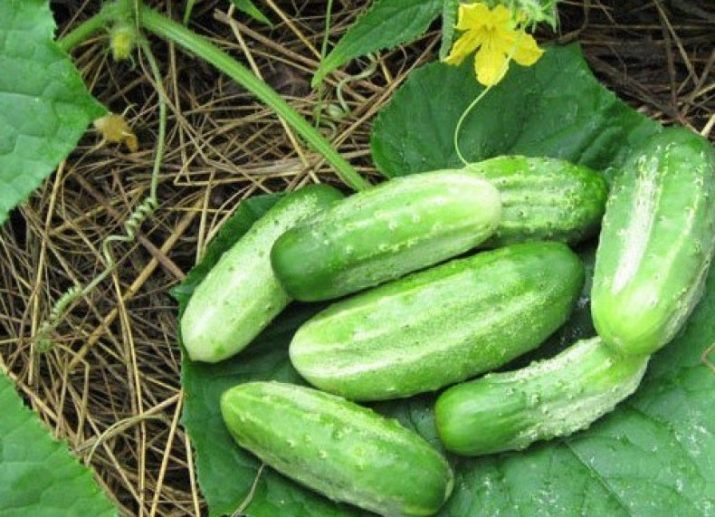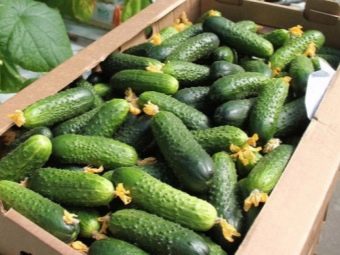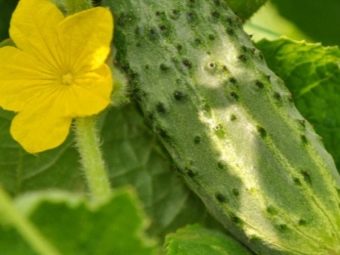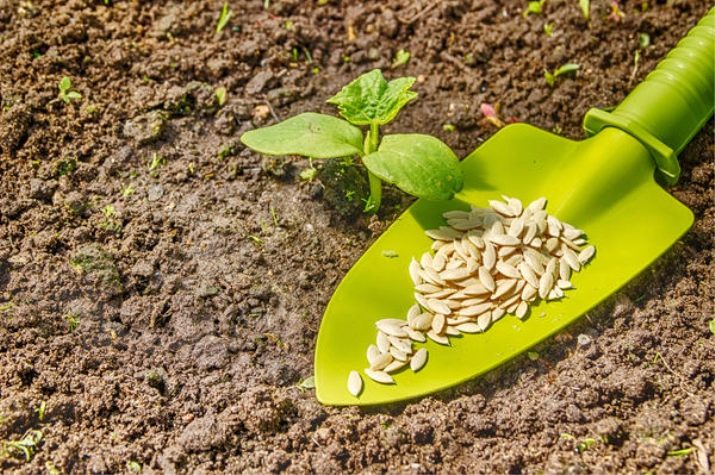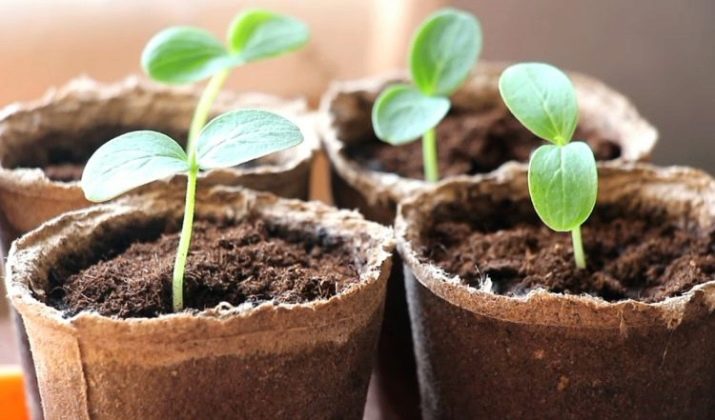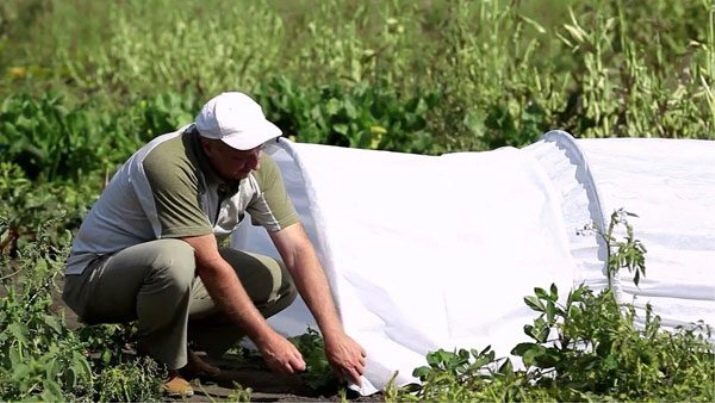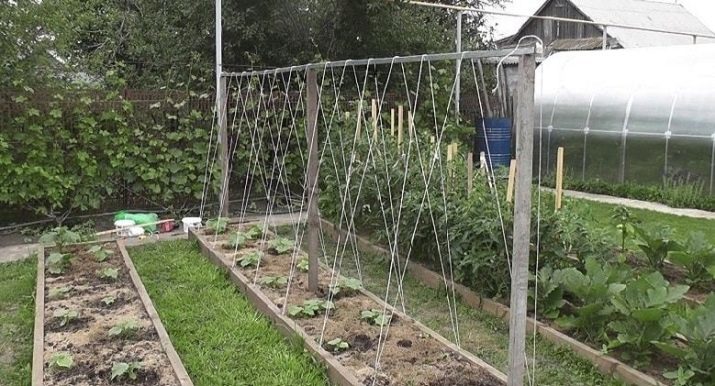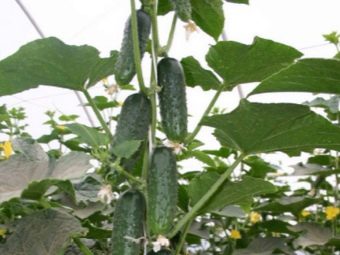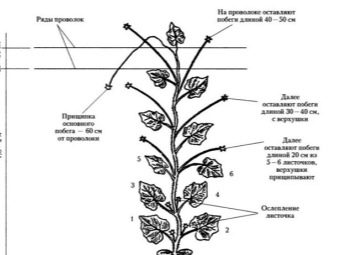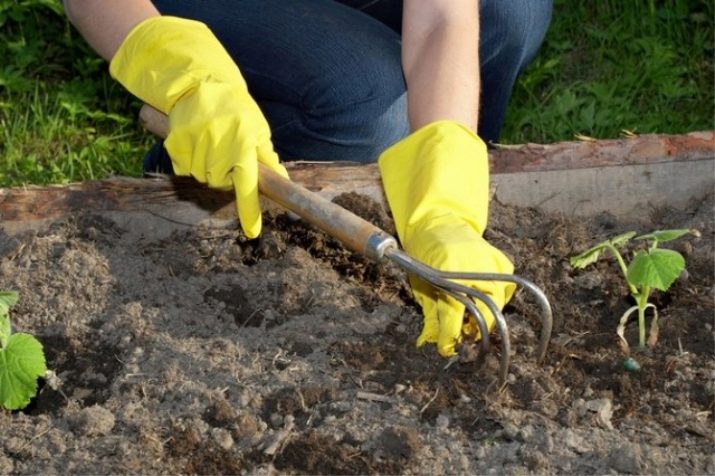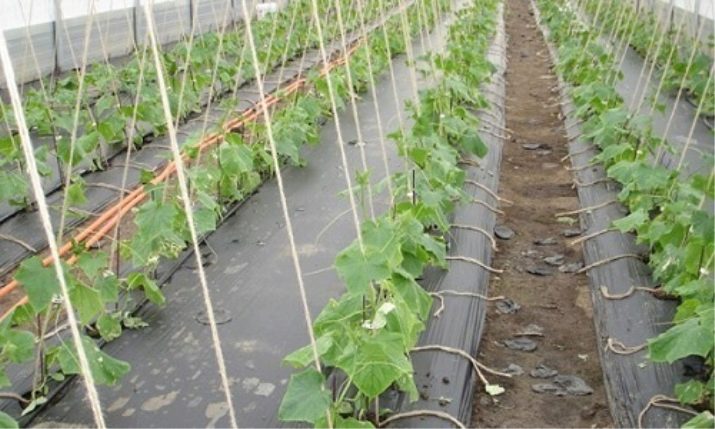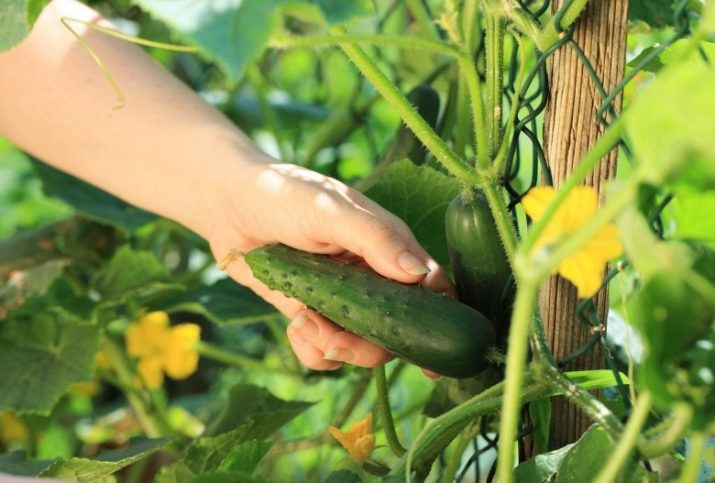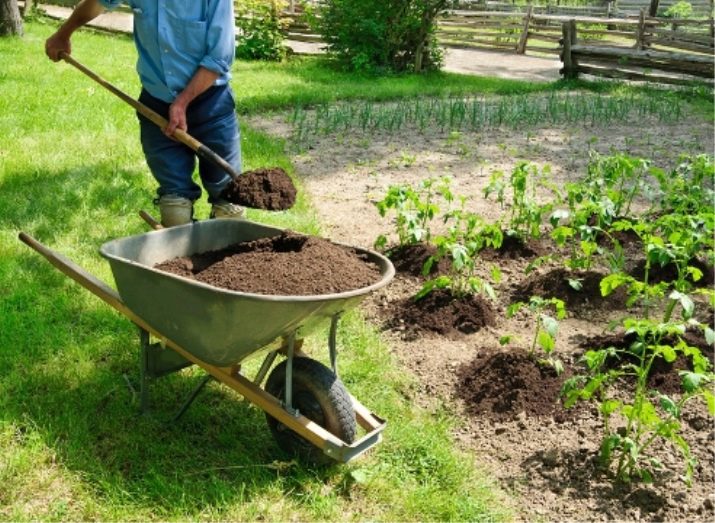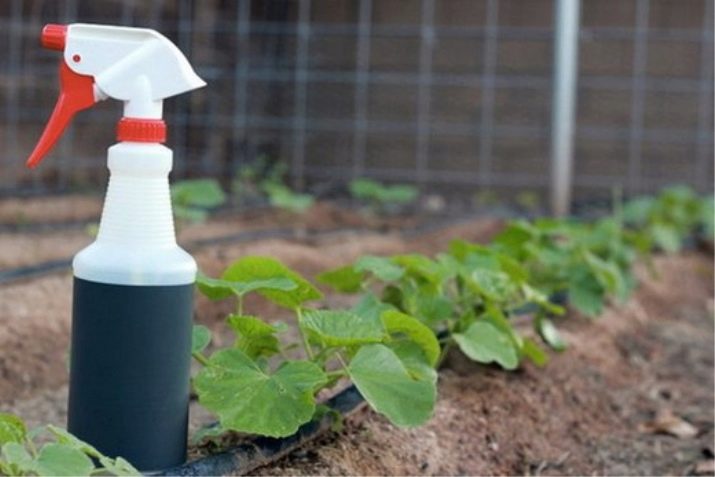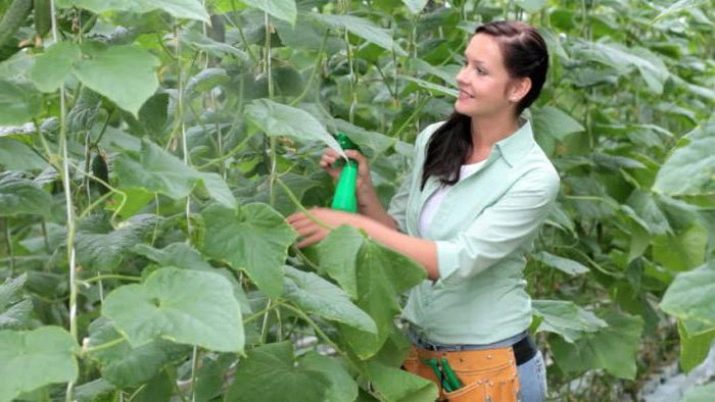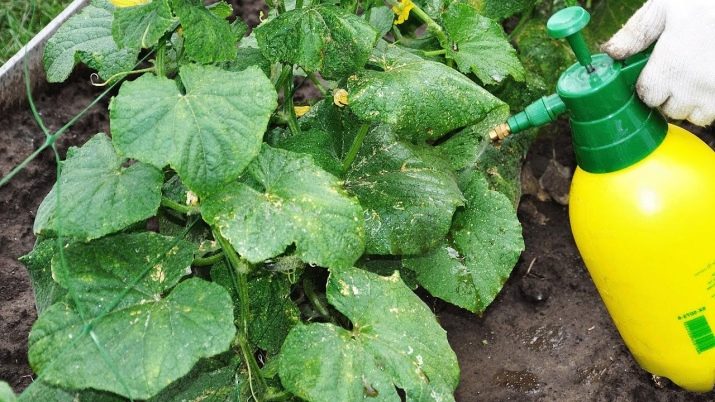Cucumber "Nezhinsky": characteristics of the variety and peculiarities of cultivation
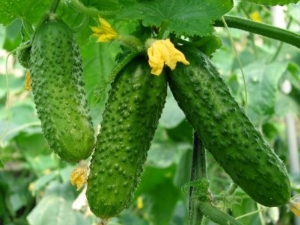
Every year there is a huge number of new types of cucumbers. All of them are in demand, but the most beloved for summer residents has long been the cucumber "Nezhinsky". This variety became known in the XVIII century. Its name is associated with the city of Nizhyn in Ukraine. In this article you can find detailed information about the characteristics of the variety and the characteristics of its cultivation.
Description of the species
This vegetable is unpretentious, it can be grown in the garden. The fruits ripen late (compared to other varieties), but there are a lot of them. Cucumber "Nezhinsky" is different:
- good yield;
- oblong fruit;
- good tangible aroma;
- hard, crispy skin;
- dense, but juicy pulp;
- sweet taste;
- long curly, rough stems with tendrils creeping along the ground or hanging grid (their length can be up to two meters);
- maximum fetal weight 110 grams;
- cucumber size up to 12 cm;
- leaves of medium size, rich bright green with whitish streaks and small black spines.
Fruits ripen in 45-60 days after germination. The rate of ripening depends on weather conditions. Cucumbers of this variety can be used for different types of conservation, as well as just for fresh consumption.
Basic rules for growing
This variety of cucumber is pollinated by bees, therefore it is best of all fruitful on the beds, in the open air. Of course, you can grow plants in greenhouses for a faster effect, but the harvest will be much less for obvious reasons. "Nezhinskoe" normally tolerate droughts, sudden changes in temperature. They are also resistant to diseases such as cladosporia and mosaic, which often attack other types of this culture.
The central and first-order stems should be pinched. So cucumbers will be much more. The first young gherkins appear on secondary stems.
Plant a variety better with seeds. The seedling method is also used, but it does not tolerate the transplant very well.
Landing nuances
Planting cucumbers is necessary only in warm weather. This is usually done in the second half of May. But if the forecast cold, it is safer to plant a culture in June. The temperature of the soil in the shade should not be below 12 degrees at a depth of 20 to 30 cm.
Sow cucumbers need only on warmed beds. To do this, in the middle of the ridge along you need to dig a small trench 25-30 cm deep. Then you should cover it with fresh manure and sprinkle with dry grass and / or leaves. The beds are sized from 1 to 2.5 m with small grooves at a distance of approximately 20 cm from the edge.
You should also prepare the seeds. Before planting, they are disinfected in a pink potassium permanganate solution (potassium permanganate) for 20 minutes. After that, you can start sowing. Already prepared seeds are planted in dug holes of a small size about 3 cm deep. The indent between them should be 30-40 cm.
Then the future cucumbers are put in a warm place (preferably up to + 25 ° C) with plenty of light. Good light will help sprouts not to grow thin and grow strong and healthy. Indoors should not be drafts.
Approximately 6-9 days before planting seedlings into the ground, it should be gradually hardened so that the plants get used to cooler conditions. Take them out to a well ventilated place during the day, and bring them closer to the landing (in about a couple of days) in the evening. This will help them better adapt to the open space of the beds. Watering seedlings is carried out only as the soil dries.
If desired, cucumber "Nezhinsky" can be grown in a seedling way. To do this, 5 weeks before planting in the soil in the open air, you need to put the seeds in special cups with peat. The roots of cucumbers are initially very weak, and this will protect them.
Care after planting
The beds already filled with cucumbers are covered with polyethylene or agrofibre film before the period until the boring starts to appear. Usually they do it themselves with the help of metal arcs, which stretch the film. It turns out something like a small greenhouse. You can also buy ready-made accessories. Watering produce a maximum of 2 times a week.
When the stems germinate, the film can either be left or removed. It depends on the weather conditions. In cool nights it is better to cover cucumbers so that they do not freeze. On hot days, the film needs to be opened, thereby giving the plants a little airing. You can not leave everything to chance, follow the watering. Do not allow strong drying out of the soil, if necessary, water the plants more often.
Creating a comfortable environment for growth
Cucumbers variety "Nezhinsky" very much like the sun. Of course, they can easily grow in the shade, but in this case, the yield will decrease significantly. To avoid this, set the trellis. Thanks to them, you can:
- provide normal lighting;
- organize a direct stream of oxygen, good ventilation;
- normalize growth (the plant can be freely located around the perimeter of the grid);
- prevent branches from tangling;
- facilitate the formation of a bush;
- simplify the collection of vegetables.
Tapestry helps save space. It also offers an excellent overview, which clearly shows each cucumber.
Shrub formation
The formation of cucumber bushes is a rather long process that requires attention and patience. When a young sprout has 4-5 leaves, it is necessary to pinch its tip in order for side shoots of 1 order to grow. When these shoots start up with 4 leaves, they should also pinch. From them will sprout of the second order, they will focus the main amount of fruit. They are not touched, leaving a length of 20-30 cm.
Next will appear male flowers, they can not be cut off, they are necessary for pollination by insects. When the plant reaches the highest point of growth, it should be cut to a couple of sheets.
General care recommendations
Watering and soil loosening rules
Gurets Nezhinsky loves moisture, so you need to make sure that the soil is constantly hydrated. Pour and dry is not necessary. Watering is carried out under the root of warm water. It is better not to touch the foliage, otherwise burns may occur, rot develop.
After each watering should loosen the soil. It:
- nourishes the root system with oxygen;
- allows the soil to absorb moisture better;
- helps to protect the plant from weeds.
Tapestry helps save space. It also offers an excellent overview, which clearly shows each cucumber.
When plants are still small, they can be mulched. It:
- ensure the safety of sprouts from the spread of weeds and diseases;
- protects against the appearance of rot;
- prevent soil erosion during rain;
- will not loosen the beds after watering.
To make mulch, it is necessary to pre-dry the grass and weeds. Also for this well suited pine branches. All this unfolds around the escape, on fresh, weeded beds.
Thinning beds
Argued that the more cucumber bushes there are on the garden, the more fruits there will be. It is completely untrue. Sometimes the bushes need to thin out. Extra is better to transplant on additional beds. Too close to each other bushes, on the contrary, will reduce the harvest.
Harvesting
An important rule is the timely collection of fruits. Do not allow overripe vegetables. You need to try to pick cucumbers every 2-3 days. If you do not have time to eat a fresh crop, you can pickle it for the winter.
Fertilizer and feeding
As a top dressing, you can use the infusion of green grass. To prepare it is very simple. All green grass, including weeds, is poured with water in a large pot and allowed to infuse for 10 days.For better effect, you can add a little manure (1 to 10) or litter (1 to 15). The mixture is well diluted with water and added to the plants for 10 days.
For better prevention, you can alternate root and foliar dressing. For the second option, a weak solution of potassium permanganate is most often used.
Fertilizing the plant too often is not necessary. It is worth doing during planting for better strengthening and growth. Repeat the procedure after the first harvest of the fruit.
There are many different types of fertilizers (dry, liquid, intended for different parts of plants). For example, for spraying use:
- urea;
- manganese solution;
- boric acid;
- copper sulphate.
To the roots pour:
- green infusions;
- solutions of bread and yeast;
- manure, bird droppings;
- top dressing from oven ash (saturated with potassium).
Disease prevention and treatment
Be sure to ensure that the foliage does not come into contact with the ground. In this way, various fungal infections can be avoided. To do this, the stalks of cucumber and tied to the trellis.
After heavy rains it is useful to use fungicides. After the negative impact of powdery mildew, the drug Topaz is used first. It is also addressed in the formation of yellow sores and spots on the sheets and fruits (anthracnose). The plant is processed twice from the beginning of the growing season with an interval of 1-2 weeks.
Preparations “Skor”, “Rayok”, “Dividend”, “Chistotsvet” are used in case “Topaz” is powerless. After these medications, you can personally prepare a solution from mullein with the addition of urea. The Mullein should be well drawn. Then 1 liter is mixed with 20 grams of urea and diluted with 10 liters of water. Root rot treated with the help of "Trichodermin".
Fight against harmful insects
Hateful aphid that sucks the life juices out of the stalks eliminated with fairly simple recipes:
- two teaspoons of finely chopped soap are diluted in 2 cups of water, then some wood ash is added;
- 25 grams of crushed garlic and / or onion mixed with 5 liters of water.
Such a mixture should be sprayed lower parts of the stems, where the aphid lives.
To get rid of spider mites, prepare a solution of celandine and water (100 g of dry powder per 1 liter of water). The plants are treated every 3 days (after the harvest has been harvested).
Reviews
The gardeners have long established a warm relationship with the "Nezhinsky" cucumbers. This is confirmed by a mass of positive reviews. Summer residents note:
- excellent taste and aroma of fruits;
- resistance to cold and drought, as well as frequent changes in the weather;
- the hardness and density of cucumbers, which are well transported;
- worthy presentation of the crop;
- the possibility of growing in the garden, in the open field;
- the possibility of growing in greenhouses;
- rare cases of illness;
- unpretentiousness and ease of growing;
- multivariate use of the crop.
And how to cook a winter salad of cucumber varieties "Nezhinsky", you will learn from the following video.

